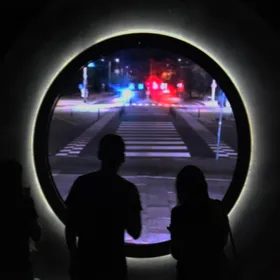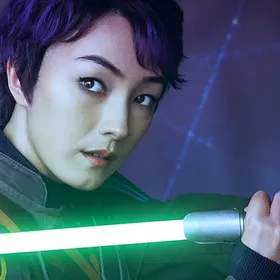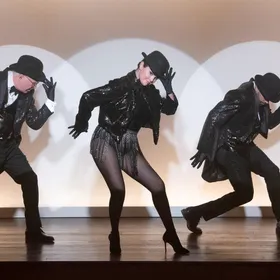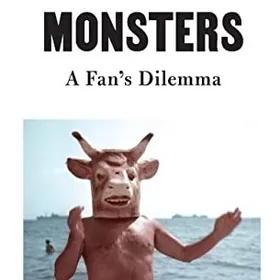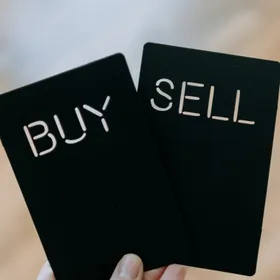I’m not going to pretend I know anything about the publishing industry, but I like to imagine myself as an author, and so as I read this book, I found myself constantly feeling indignant about the pressures and injustices that the industry puts artists through. I credit Kuang for making an outsider feel like an insider.
For the first time, I’m revisiting and writing about a film that I’ve previously reviewed. It’s enlightening to see how my tastes have changed since over a decade ago.
My earlier rave was not completely misplaced… I still agree with myself that the strengths of the film lie in its poetic style and rhythm. However, I see in my past self a style-over-substance attitude that maybe I’ve outgrown?
Most notably, I’ve come to take more seriously any story about trauma and mental illness. I’m not above enjoying thrillers or horror or action films that deal with revenge, but I think that the style needs to be heightened enough for it to feel fantastical, e.g. John Wick or Kill Bill (although it’s been a long time since I’ve watched the latter).
I had trouble swallowing Confessions this time around because its style is melancholic and realistic. Genre films like action movies or murder mysteries can skip over the trauma of death in favour of plot; but when the trauma is the plot, it carries much more weight. Are we really supposed to revel in the mental torture of children by an adult?
I’m a sucker for long, meandering sentences as a stylistic flourish, and this book contains plenty of those. Mohsin Hamid maybe overdoes it with this technique, but I’m cool with it.
(Spoilers follow)
I think the book can be divided roughly into two halves. The first is a realistic look at life in an unnamed city as it falls under civil war. I guess it’s meant to evoke Syria but there may be further references beyond my ken. I found myself missing the specificity of time and place, and was carried through mainly by the romance between the main characters.
The second half kind of explains the vagueness of the first. Forced to flee their home, the couple travels through “doors,” literal portals that lead to other parts of the world. Unlike their origin, their destinations are named: Mykonos, London, Marin. They find themselves living amongst other refugees from all over the world.
The book rolls to a heartbreaking end as the relationship of the couple deteriorates under the pressure that all of the refugees face as a group. Despite their diverse backgrounds, the citizens of the West just see them as a single mass of unwelcome intruders. Their city was unnamed, because their identity is irrelevant to their opponents: it doesn’t matter where they came from.
The pacing can be a bit slow in this show, but whenever the action kicks in, it’s a thrill. Sabine’s combat style—a mix of novice lightsaber handling, and expert use of Mandalorian weaponry—is fun to watch. As a character, she brings a lightness and attitude that’s missing from most of Star Wars these days. Indeed, Ahsoka herself is so dispassionate that she feels like a side character in her own show. Overall, I enjoyed as a Rebels revisit, which makes me wonder how it lands with an audience who isn’t familiar with that earlier show.
I enjoyed this season less than the first two. The strength of the show was always the chemistry between the main trio, and this season attempted to change up the formula by having them “split up” temporarily. It might have worked had they individually been given compelling storylines, but I think the show fell in love with the Broadway scene too much. Personally, I wasn’t very interested in the behind-the-scenes world of musicals, even if the musical itself—a murder mystery where the suspects are babies, called Death Rattle Dazzle!—is a pretty funny concept.
The premise of this book tickled a morbid sense of fascination in me: it asks, what do we do with the art of monstrous men? (Think Woody Allen, Kevin Spacey, Bill Cosby.)
More on that later. I actually engaged most with the book when it took a slight digression to discuss a type of “monster” that we don’t talk about often: a mother who abandons her children to pursue art. The author wonders if parenthood is incompatible with creativity, and dares to ask if she would have been a better writer if she hadn’t become a mother. Even though there’s a distinct feminist slant to the book, I found myself identifying with this section as I follow my journey towards potentially becoming a father.
Back to the original question: what do we do with the art of monstrous men? I wasn’t sure that I really needed an answer, frankly. I’m of the opinion that there are no hard and fast rules for this kind of thing. Always strive to know the truth, and if it makes you uncomfortable, then you can choose to stop engaging with an artist’s work. But on the other hand, you should still enjoy what you enjoy, as long as you acknowledge the truth, however ugly it may be.
As summed up in Monsters:
The way you consume art doesn’t make you a bad person, or a good one. You’ll have to find some other way to accomplish that.
Years ago, I took a work trip with my closest colleague and my girlfriend, who is now my wife. You might think that my colleague would be the third wheel, hanging out with a couple. Or, you might think that my wife would be the third wheel when my colleague and I talked shop. But somehow, I felt like the third wheel for most of the trip because the two of them were both much more talkative than me, and I sort of disappeared from the conversation.
Of course, they might have both felt like the third wheel, too.
The graphic novel Roaming perfectly captures this experience of spending a short, intense period of time as a trio. Set during a trip to New York City, the three characters each have moments of feeling like the outsider to the other two. Relationships are ultimately defined in pairs, but one can’t possess another fully, even though we sometimes want to.
Trader is a one-person, single-location thriller.1 As such, the discussion must begin with actor Kimberly-Sue Murray, who carries the film with chameleon-like confidence. The character is all about deception and manipulation, as she puts on a different accent for each of the conversations she has with the other characters over the phone. With hair, makeup, and body language changes, she sometimes looks like a different person from scene to scene.
Another strength of the film is the visual design and propulsive editing. It all takes place in a dingy basement apartment, so there’s not much physically for the filmmakers to work with, but using creative lighting and mixing in a generous dose of screenlife shots, they are able to create a whole world, which feels like it’s always in motion.
I had trouble with the morality of the film, which I’m sure is the point. It seems to say that the only way to survive in a horrible world (i.e., the world of stock market finance, and more broadly, capitalism) is to be even more horrible.2 The film in its final moments makes (click for spoiler) a mass shooting seem triumphant, and I really can’t go there with it.
Footnotes
-
See also: Emily the Criminal ↩
It’s with great guilt that I must admit to not finishing this one. The forced exile and internment of Japanese-Canadians during WWII was a shameful event, and deserves to be carved into the literary record. However, as a novel, I was not able to engage with it.
To me, the narrative voice feels both too distant and too close. It begins from the adult Naomi’s memory of her childhood, resulting in a lot of “I was a child then, and I don’t remember/didn’t understand what was going on.” Then it transitions to a long epistolary section, with Aunt Emily narrating the period leading up to their family’s relocation, which has a lot of “Everything is chaos, I don’t know what’s going on.” And when we shift to Naomi’s first-hand experiences in the Slocan encampment, it becomes overly descriptive, focussing on too many details of the surrounding forest.
I know all of this is meant to evoke Kogawa’s subjective experiences, but I felt that the story might have been better served with a more objective and consistent narrative style. It was too structurally fragmented for my tastes.
Not to toot my own horn, but most of the mathematical concepts covered in this book are things that I already knew. It’s enjoyable to read, but it felt like a superficial tour of the most famous ideas in math and physics. When we reach the latter topics (e.g. relativity, string theory), the connection to the original focus on zero becomes a bit tenuous.
I had one big problem with this book. It repeatedly insists that the West rejected the idea of zero for much of history, while the East accepted it much earlier. But then, most of the book is about Western mathematicians and philosophers, while the East only gets a few pages. If the book is supposed to be about zero, it needs to give us more details about the ideas that the East developed.


